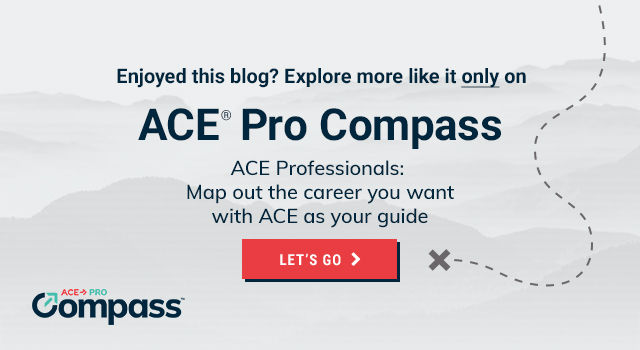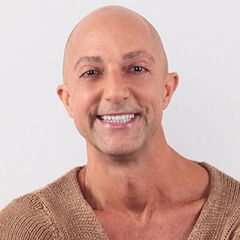More than ever, maintaining our social connections is a business necessity. While physical distancing is required to keep everyone safe, social connection has become one of our biggest endeavors in fitness.
Read on to learn how you can support your social media community through the use of four types of series that are ideal for health and exercise professionals.
What is a “Social Media Series”?
Simply put, a series is a string of social media posts or stories, spread out over a designated amount of time, linked with one theme, format or both. Erin King, the author of Digital Persuasion, creator of The Social Media Spa, and social media consultant to The Oscars and ABC/Disney, advocates this approach to social media marketing.
“It gives your audience a set of consistent expectations, especially during such unpredictable times,” explains King. “We like to know that each post within that series will deliver similar caliber content about a similar category or topic, so we can naturally continue to follow along or pick up at any point and not feel like we missed too much from the beginning. A series also allows you to dive deep into your topic by delivering super-small, snackable content bites, like little digital breadcrumbs, versus blasting them with an uber-long delivery.”
The most successful series typically fall into four types, and they can appear on almost any platform, depending on time-limit length (Instagram clips must be 59 seconds or less, while Facebook allows clips up to hours). Many experts like King recommend using as much of your content on as many sites as possible because those who follow your Instagram accounts may be different from those who follow you on Facebook. Once you have finished shooting, editing and prepping your content, posting to various platforms according to one of the four series types becomes your only strategy.
Here are four main types of series:
- Formatted Content Series
- Build-up Series
- Tips Series
- Interactive Series
Formatted Content Series
A formatted content series begins from a template of start, middle and end, and the only thing you have to do is to change the date and topic for a post.
For example, this year I ran a spring and summer inspirational series for exercise professionals worldwide called “#fitnessworks” LIVE on Facebook. This was a series of seven-hour shows that began in Eastern Europe on Sunday evenings in NYC time and traveled west, finishing in Asia on Monday morning. The format included 28 presenters who spoke for 15 minutes, each representing the country where they lived. I asked each presenter the following questions:
- Where are you geographically, and what time is it?
- What’s the current status of civilians where you are; what’s open and what’s closed in general?
- What’s your current state of mind and the state of mind of those in your community?
- What are you finding most inspirational in our fitness world during our challenging times?
- Is there anything from your pre-COVID life that you do not miss?
With each weekly episode, viewership grew by approximately 30%. Viewers enjoyed dozens of a-ha moments of inspiration and “I could try that, too!” that united our world, inspiring a second hashtag: #unitednationsoffitness.
Over the seven months of this series, we spoke to individuals on almost every continent. While more than 10 live seven-hour shows may seem complicated at the start, a formatted content series often proves to be the easiest of social media series because you simply repeat the same template you create at the onset. You can watch my series template come to life at youtube.com/findlawrence under the playlist “fitnessworks.”
Here’s another example: Alvin Netto, ACE Certified Personal Trainer and current AFC Personal Trainer of the Year winner based in Malaysia, has been using a formatted content series for the past year. In this series, he profiles female clients performing strength and endurance trainings in his home gym. His purpose is to highlight answers to the most common questions he has received from his clients over the years so everyone can maximize benefits while minimizing time. This series was watched by a wide range of people throughout the world, all commenting in real-time. You can see Netto’s series on his Facebook Page at facebook.com/alvinnettofitness (#beanachiever).
Think of a format you could create that would bring your like-minded social tribe together to discuss topics such as food, nutrition, masking, outdoor fitness or indoor core training without equipment and invite guests to drop into your series. Once you have a tried-and-true template, your series can become “plug and play” like #fitnessworks.
Takeaway: Come up with a series of questions to ask all your guests and see what themes naturally emerge from their answers. This format generally requires a longer social media format such as YouTube or Facebook, but you can post teasers on Instagram and IGTV. You can post bi-monthly or monthly and be sure to create a hashtag specifically for your series.
Build-up Series
A build-up series is comprised of posts and stories that build up to a grand-slam conclusion of a singular purpose.
Here’s an example of this type of series: Yury Rockit, an ACE Certified Personal Trainer and Integrated Movement Specialist from Belarus, started posting stretches at a wall, using seemingly disconnected movements that were beautifully photographed outdoors in Greece. These posts turned out to be a three-month series of posts of random movements that documented his personal goal of doing a handstand without assistive devices.
“I initiated a ‘handstand series’ on Instagram that shared to Facebook,” Rockit says. “I posted approximately two stories per week over a few months and then did the final handstand as a post. People grew more interested and followed along to ask me more questions and ultimately, I generated more interest and even more clients.” You can view Rockit’s handstand series build-up in stories and posts at Instagram.com/yuryrockit (#movementmedicine).
Personal trainer Dee Miller of Peterborough, Ontario, Canada, has been teasing photos of a cookbook she recently published. All summer, she used Facebook and Instagram to post meals, highlights, ingredients and finished products. Her entire series served as a build-up to an actual link to purchase her book. Engagement increased with each tasty morsel she posted, and anticipation grew until her e-book finally became available. That she also gives a portion of her book to her charity allowed her to cross-post and tag to increase more involvement overall. You can view Miller’s tasty bites at Instagram.com/protrainerdee.
Takeaway: Create a build-up series with useable and implementable tips so followers grow “hungry” for more. If you want to gradually tease your build-up (like Rockit’s handstand example, above), consider offering bi-weekly 58-second (or less) tips to post on Instagram and share to Facebook.
Tips Series
A tips series allows you to show your fitness and wellness expertise.
Claire Coughlin Powell, an ACE Certified Group Fitness Instructor based in California, teases Laughter Yoga tips on her Instagram and Facebook accounts with accessible, non-yogic language and an easy approach. With good humor and in a timely fashion, she offers viewers an easy takeaway skill to improve the overall quality of their lives. As her growing following becomes interested in her approach to laughter yoga, many have messaged her via Instagram and Facebook to inquire about how they can purchase her online classes. Now she boasts an international following that covers many different time zones and countries. You can watch Powell’s tips on laughter yoga here (#laughanyway).
Similarly, I created a “#tuesdaytips” series for each Tuesday, where I offer practical communication strategies from the ACE Group Fitness Instructor Handbook and my own book, Cream Rises. Each tip is aimed at boosting communication with classes and clients and bridging the gap created by physical distancing. Instagram and Facebook draw followers from different demographics, but each group has come to expect this tip every Tuesday. You can view this YouTube series at youtube.com/findlawrence (playlists matching hashtags #tuesdaytips and #lessonslearned).
Takeaway: Make your free tips series super short, useable and implementable so followers want more. Consider creating and posting to Instagram weekly video tips that are 58 seconds or less and then sharing these videos to Facebook.
Interactive Series
An interactive series involves creating a predictable series with a single topic with open discussion to followers, usually held with real-time interaction such as a Facebook LIVE video.
Rockit’s interactive series on meditation for everyone called “Aliveness Playground” appeared this past summer on Facebook LIVE; he created it in an effort to bring some healing mindful work to a homebound world at a time of uncertainty. He interacted with guests and covered a different mindful meditation topic each week. Friends and followers interacted with him in the real-time back-and-forth, which generated a more personal virtual, interactive experience. Fans knew the format and topic, but not the specific strategy, which created excitement and anticipation. After each episode, he saved the recording to his YouTube channel to reach an even broader audience. Repurposing recorded content is key to use among various social media channels instead of constantly shooting new content. All of Rockit’s meditation “Aliveness” Interactive series lives at http://bit.ly/YuryRockitYouTube (#aliveness).
Similarly, I host a weekly #ZoomatNoon group for my masterMINDful mentees and also host on Facebook Live #WednesdayatOne for all others to reach me live and interact with their questions and comments. These predictable interactive series allow friends and followers to do more than watch because they can be seen, heard and validated with real solutions to their real concerns. My masterMINDful group is open to any professional at no cost at https://bit.ly/findLawrencemasterMINDfulgroup.
Takeaway: For your interactive series, find the platform that most of your followers use and encourage communication in real-time with them to create community and ask questions. Consider posting teasers each week and hosting an Interactive event at least bi-monthly.
Questions to Ask Yourself
Regardless of which type of series you choose to undertake first, consider these tips from King:
- Ask yourself “What is a problem that my tribe faces?’ For example, King noticed that her followers were always talking about the nightstand stack of books that kept piling up that they never had time to read, so she knew this was something she wanted to help them solve.
- Ask “What format does my audience prefer?’ As an example, King says that many of her followers are moms who spend a lot of time in the car, so they prefer to listen while multitasking.
- “Ask “What need can my series address?” King created a podcast series called ‘Highlights,’ where she interviewed authors of many of the books languishing on nightstands. In her podcast, these authors offered the most important “highlightable” or big ideas from their books, which allowed listeners to benefit from the books, but in a much shorter—and manageable—timeframe.
Ultimately, King says you have to ask yourself, “What problem can you help solve and where might be the best place to solve it?”
Experimenting with these four types of social media series will likely bring you more followers, more consistently.




 by
by 












